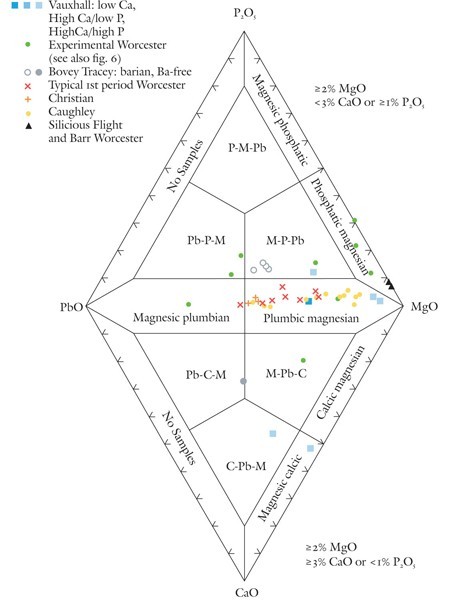
A compositional space diagram for soft-paste porcelains. (Drafted by Randolph Corney; artwork by Nichole Drgan.) Triangular planes from this diagram are used to classify these wares.

Explanation of the method of plotting analytical data on a triangular diagram. The example chosen is based on paste data for the underfired, aluminous-silicic coffee can illustrated in fig. 10.

Classification of magnesian porcelains using the P2O5-PbO-CaO-MgO diagram.

Classification of highly phosphatic porcelains using the P2O5-10SO4-10PbO diagram.

Removal by projection of the phosphate component of variably calcic and plumbian silicious wares.

Classification of variably calcic and plumbian silicious wares using the CaO-PbO-P2O5 diagram.

Classification of variably calcic, highly silicious, and aluminous porcelains using the SiO2-3Al2O3-5CaO diagram.

Classification of early, experimental(?) aluminous and plumbian sherds from the Isleworth site using the SiO2-5Al2O3-5PbO diagram.

Flowchart governing the selection of appropriate compositional planes for classifying eighteenth-century American and British soft-paste porcelains.

An underfired, aluminous-silicic porcelain coffee can with a lead-rich glaze. H. 2 9/16". (Photo, J. Victor Owen.)

Backscattered-electron image showing the lead-rich glaze (white band) and high porosity (black patches) of the underfired coffee can illustrated in fig. 10. (Image, J. Victor Owen.)
